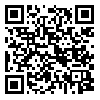Volume 80, Issue 8 (November 2022)
Tehran Univ Med J 2022, 80(8): 660-669 |
Back to browse issues page
Download citation:
BibTeX | RIS | EndNote | Medlars | ProCite | Reference Manager | RefWorks
Send citation to:



BibTeX | RIS | EndNote | Medlars | ProCite | Reference Manager | RefWorks
Send citation to:
Rezaei M, Sadri-Aghdam N, Azghani M R, Ghaderi F, Adigozali H. The effect of hip joint position on knee joint isokinetic dynamometry indices in football and track and field athletes. Tehran Univ Med J 2022; 80 (8) :660-669
URL: http://tumj.tums.ac.ir/article-1-12006-en.html
URL: http://tumj.tums.ac.ir/article-1-12006-en.html
Mandana Rezaei1 
 , Nader Sadri-Aghdam1
, Nader Sadri-Aghdam1 
 , Mahmood Reza Azghani2
, Mahmood Reza Azghani2 
 , Fariba Ghaderi1
, Fariba Ghaderi1 
 , Hakimeh Adigozali *
, Hakimeh Adigozali * 
 3
3

 , Nader Sadri-Aghdam1
, Nader Sadri-Aghdam1 
 , Mahmood Reza Azghani2
, Mahmood Reza Azghani2 
 , Fariba Ghaderi1
, Fariba Ghaderi1 
 , Hakimeh Adigozali *
, Hakimeh Adigozali * 
 3
3
1- Department of Physiotherapy, Faculty of Rehabilitation Sciences, Tabriz University of Medical Sciences, Tabriz, Iran.
2- Department of Biomechanics, Faculty of Biomechanics Engineering, Sahand University of Technology, Tabriz, Iran.
3- Department of Physiotherapy, Faculty of Rehabilitation Sciences, Tabriz University of Medical Sciences, Tabriz, Iran. ,adigozalih@tbzmed.ac.ir
2- Department of Biomechanics, Faculty of Biomechanics Engineering, Sahand University of Technology, Tabriz, Iran.
3- Department of Physiotherapy, Faculty of Rehabilitation Sciences, Tabriz University of Medical Sciences, Tabriz, Iran. ,
Abstract: (1082 Views)
Background: Isokinetic dynamometry is a golden standard test to estimate lower extremity sport related injuries in the athlete assessment. Dynamometry is also commonly used to design preventive protocols. The aim of this study was to explore the effects of hip joint positioning in seated and lying positions on knee joint dynamometry indices, including extensor and flexor peak torques in football and track and field athletes.
Methods: Forty four male athletes (including 22 football players and 22 track and field athletes) have participated in this descriptive-analytic study. The sampling method was simple nonrandom sampling. This study was conducted in the Biomechanics laboratory of the Rehabilitation Sciences, Faculty of Tabriz University of Medical Sciences since October 2019 to October 2020. Knee joint dynamometry indices were consisted of concentric and eccentric flexor and extensor peak torques at 60 degrees per second velocity. Optimum length, angle of crossover, and the muscle balance ratios (concentric extensor peak torque/concentric flexor peak torque and eccentric extensor peak torque/concentric flexor peak torque) were also evaluated. All assessments were performed in both seated and lying positions. The indices were compared between football players and track and field athletes.
Methods: Forty four male athletes (including 22 football players and 22 track and field athletes) have participated in this descriptive-analytic study. The sampling method was simple nonrandom sampling. This study was conducted in the Biomechanics laboratory of the Rehabilitation Sciences, Faculty of Tabriz University of Medical Sciences since October 2019 to October 2020. Knee joint dynamometry indices were consisted of concentric and eccentric flexor and extensor peak torques at 60 degrees per second velocity. Optimum length, angle of crossover, and the muscle balance ratios (concentric extensor peak torque/concentric flexor peak torque and eccentric extensor peak torque/concentric flexor peak torque) were also evaluated. All assessments were performed in both seated and lying positions. The indices were compared between football players and track and field athletes.
|
Results: The interaction effect of group and hip joint was not significant (P<0.05). Further, concentric and eccentric flexor and extensor peak torques and conventional flexor to extensor ratio were higher meaningfully in the seated position compared to the lying (P<0.05). Optimum length was significantly higher in the lying position, but the angle of crossover was higher in the seated position (P<0.05). The hip joint position was not effective on the functional flexor to extensor ratio (P>0.05). Also, dynamometry indices were not different between football and track and field groups (P<0.05).
Conclusion: Findings revealed the effects of hip joint position on strength measurements in football and track and field athletes. This factor should be considered to design strengthening exercises for athletes and also to estimate the sport injury risk. |
Type of Study: Original Article |
Send email to the article author
| Rights and permissions | |
 |
This work is licensed under a Creative Commons Attribution-NonCommercial 4.0 International License. |



